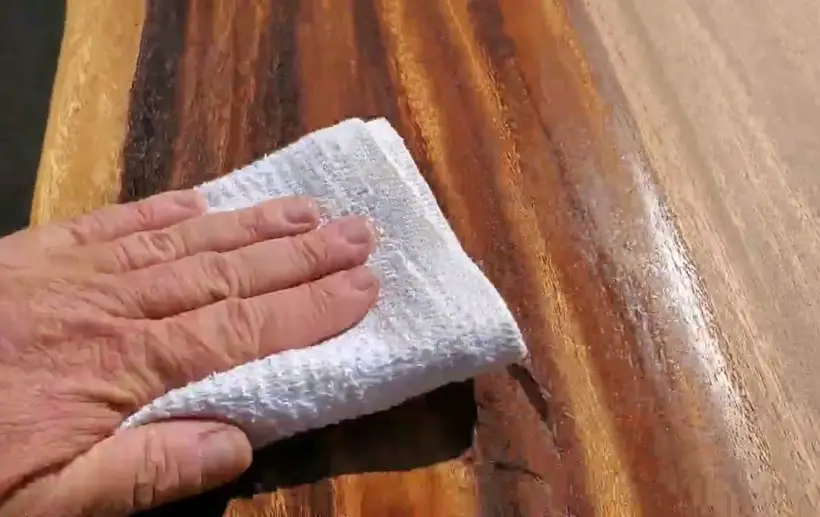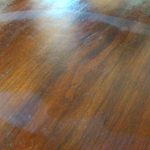Does Tung Oil Darken Wood: Everything You Need To Know
The beautiful sheen that tung oil gives wood has led to its increasing popularity among consumers. However, some wonder whether that tung layer would leave the wood dark or not.
So, does tung oil darken wood? No, tung oil generally won’t darken the wood. However, if multiple layers of tung oil are used, then it may darken the wood. On the other hand, if you want your furniture to darken, then dark tung oil may be a solid option for you.
Nevertheless, tung oil is a wonderful natural product with a lot of qualities that should be handled carefully. With the right knowledge and proper techniques, you can take your woodwork to the next level. Don’t worry, we will cover it all here. Let’s get started.
Does Tung Oil Darken Wood? In-Depth Guide
Tung oil, also known as China wood oil, has been widely used for centuries as a wood finish and preservative due to its unique properties. One of its finest qualities is that it penetrates through the wood and enhances its color. This is where most users have second thoughts, as tung oil may darken the wood.

Well, enhanced color doesn’t supposedly mean that it will darken the wood. The tung oil will get inside those fibers of wood and give a finer finish while keeping whatever color it was in the first place. Thus, it may look like it is getting darker, but it’s not, as the tung oil is just bringing back the faded color.
Why Doesn’t Tung Oil Darken Wood?
Well, there are plenty of reasons why tung oil doesn’t darken wood. Let’s check it out.
- No External Dyes
Tung oil doesn’t include any additives or colorings that could change the color of the wood. It is a natural finish that complements the natural color of the wood. In contrast, other treatments include dyes or stains that darken or change the appearance of the wood.
- No Chemical Reactions With Wood Components
Tung oil does not chemically react with the wood, in contrast to certain other wood treatments that could react with the wood. This means there are no chemical interactions or reactions that result in the wood becoming darker.

- What Tung Oil Is Made Of
A fatty acid, which is called triglycerides, makes up the majority of tung oil. These fatty acids, which include oleic, linoleic, and linolenic acids, do not naturally cause wood to darken.
Multiple Layers Of Tung Oil Will Lead To Darkening Effect
If you apply one or two layers of tung oil, there won’t be any darkening effect. On the other hand, if you apply multiple layers of tung oil, then the darkened wood color can’t be avoided.
It’s because Tung oil molecules combine to form larger, more complex structures known as polymers when multiple layers are applied. Along with the increased durability of the wood, these polymers are responsible for darkening the color of the wood.
Thus, a darker hue results from the formation of more polymers as more layers of tung oil are applied.
Dark Tung Oil: If You Desire Darken Finish
If you want to get the benefits provided by tung oil as well as get the darkening effect, then dark tung oil is the option. The reason behind it is that dark tung oil comes with additional chemicals. This includes iron or cobalt salts.
The chemicals used in the production of dark tung oil react with the wood fibers, causing a darker coloration to develop over time. This reaction results in a rich, deep color that enhances the natural beauty of the wood. Furthermore, provides a protective finish that is both durable and attractive.
So, instead of going with multiple layers of tung oil that will cost you more, as you will need more, go with dark tung oil. However, multiple layers of tung oil do provide better durability than one or two layers of dark tung oil or just tung oil.

How To Apply Tung Oil On Wood
Here’s the correct way of applying tung oil on wood;
- Step 1: Prepare the wood surface by sanding the surface in the direction of the wood grain.
- Step 2: Take a clean cloth and wipe off any dust particles.
- Step 3: Take a brush and pour a small amount of tung oil onto the brush.
- Step 4: Apply thin layers of tung oil with the brush onto the surface, ensuring the strokes are long and even in the direction of the grains.
- Step 5: Wait 30 minutes for the first layer of the tung oil to dry.
- Sand the wood again.
- Step 6: Reapply a layer of tung oil onto the surface following the same procedure mentioned above.
- Step 7: Wait for 12 hours for the tung oil to completely dry and cure the wood.
Here’s a video that should help you with the process;
FAQ
Let’s check out some commonly asked questions regarding tung oil and its darkening effects on wood;
- Can I use Tung Oil on all types of wood?
While most wood types can be treated with tung oil, hardwoods like oak, maple, and walnut respond well to it. Softwoods and open-grain woods might not be the best candidates for them because they can make them overly greasy or sticky.
- Are there any differences in how pure tung oil and tung oil finishes affect wood color?
Impure tung oil has additional chemicals inside it, which may contribute to a darker color. Contrarily, pure tung oil will not affect the color of the wood.
- Can thinners in tung oil products affect their impact on wood color?
Yes, it can. Thinners with high concentrations of turpentine may result in a darker and more amber-colored finish. Similarly, thinners with high concentrations of mineral spirits will result in a lighter finish.
Conclusion
So, does tung oil darken wood? No! Unless you apply multiple layers of tung oil onto the wood surface, it won’t darken. So, it’s recommended that you stick with one or two coats of tung oil if you want to preserve the natural color.
On the other hand, if you desire dark color, then dark tung oil would be a great choice. It comes with additional chemicals that react with the wood to give you a dark finish.





